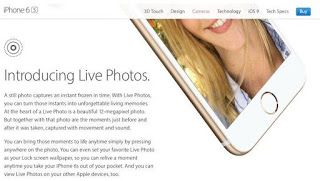In an 87-page opinion issued nine days after oral argument, the Board sustained an opposition to registration of the proposed mark LIVE PHOTOS for "Computer software for recording and displaying images, video and sound" on the grounds of genericness and, alternatively, mere descriptiveness. As to the latter issue, the Board shot down Apple's claim of acquired distinctiveness under Section 2(f). Gang Cao v. Apple Inc., Opposition No. 91239006 (June 26, 2021) [not precedential] (Opinion by Judge Marc A. Bergsman).

Standing: Apple argued that Opposer Cao lacked
"standing" to bring the opposition because Cao does not
use the term "Live Photos." The Board pointed out,
however, that a party need not use the term at issue to establish
its entitlement to a statutory cause of action. "Opposer has a
real interest in the proceeding because [he] has a present or
prospective right to use 'Live Photos' as a generic or
descriptive term to describe [his] software." Cao "has a
legitimate interest in preventing Applicant from gaining an alleged
unfair competitive advantage by maintaining a registration for a
purportedly generic or descriptive term for such
software."
Genericness: The Board found the genus of
services to be not just the identified computer software, but also
the resulting images, video, and sound produced by the software,
because "the resulting images, video, and sound produced by
the software are the purpose or key aspect of the
software."
Opposer Cao relied on dictionary definitions, Apple's own use of the term, use by authors and reviewers, and significant third-party usage of "Live Photos" and "Living Photos." Apple argued that the Internet documents constituted hearsay, but that Board pointed out that it did not rely on the documents for the truth of the matter asserted therein. "The probative value of these documents lay in the fact that we may infer consumer perception through what the author wrote and, presumably, what the readers read."
Apple further argued that these documents were of little
probative value without proof of the amount of viewership or
circulation. The Board, however, found that even if some of the
sources of the documents were small enterprises, "there is
still a significant body of evidence of third-party
use."
Although there is no dictionary definition for "Live Photo(s)", that fact was not dispositive. See, for example, In re Gould Paper Corp., 834 F.2d 1017, 1 USPQ2d 1110, 1111 (SCREENWIPE held generic even though there was no dictionary definition of the compound term).
We find that the evidence of record in its entirety proves that consumers perceive the term "Live Photo(s)" as a generic term for "computer software for recording and displaying images, video and sound," including the resulting images, video and sound produced by the software. As Judge Rich explained in In re Abcor Development Corp., 588 F.2d 811, 200 USPQ 215, 219, 219 (CCPA 1978) (Rich, J., concurring), a term that immediately and unequivocally describes the purpose and function of appellant's goods is a name for those goods, for "[t]hat is what names do. They tell you what the thing is." The evidentiary record as a whole proves that consumers perceive the term "Live Photo(s)" as a thing, not a source.
Mere Descriptiveness: The Board then considered
the alternative ground of refusal, assuming arguendo that
LIVE PHOTOS is not generic. Implicit in the Board's genericness
holding is a finding the the term is not only merely descriptive,
but highly descriptive. Apple claimed that term has acquired
distinctiveness under Section 2(f) and therefore is not merely
descriptive under Section 2(e)(1).
Applying the CAFC's Converse factors, the Board noted that there was no survey evidence nor any direct testimony from actual purchasers. Apple's use of the term has not been substantially exclusive. Because the software is pre-installed, it was not clear "whether and the extent to which [consumers] are aware of the "Live Photos" software and whether it plays a role in their decision to purchase an iPhone." There was no evidence that Apple displays the term as a trademark or promotes "Live Photos" as a brand of software exclusively associated with Applicant.
Although Apple's iPhones have been incredibly popular, that fact does little to demonstrate how consumers perceive the term LIVE PHOTOS. Apple claimed extensive copying of the mark, but there was no evidence of any policing efforts on its part. Although media coverage referred to LIVE PHOTOS, it was in the context of a feature of the iPhone camera. "The media attention does not separate 'Live Photo' from Applicant or its iPhone trademark. 'Live Photos' does not stand apart from Applicant or the iPhone mark."
The Board therefore concluded that Apple had failed to prove acquired distinctiveness.
Read comments and post your comment here.
The content of this article is intended to provide a general guide to the subject matter. Specialist advice should be sought about your specific circumstances.

